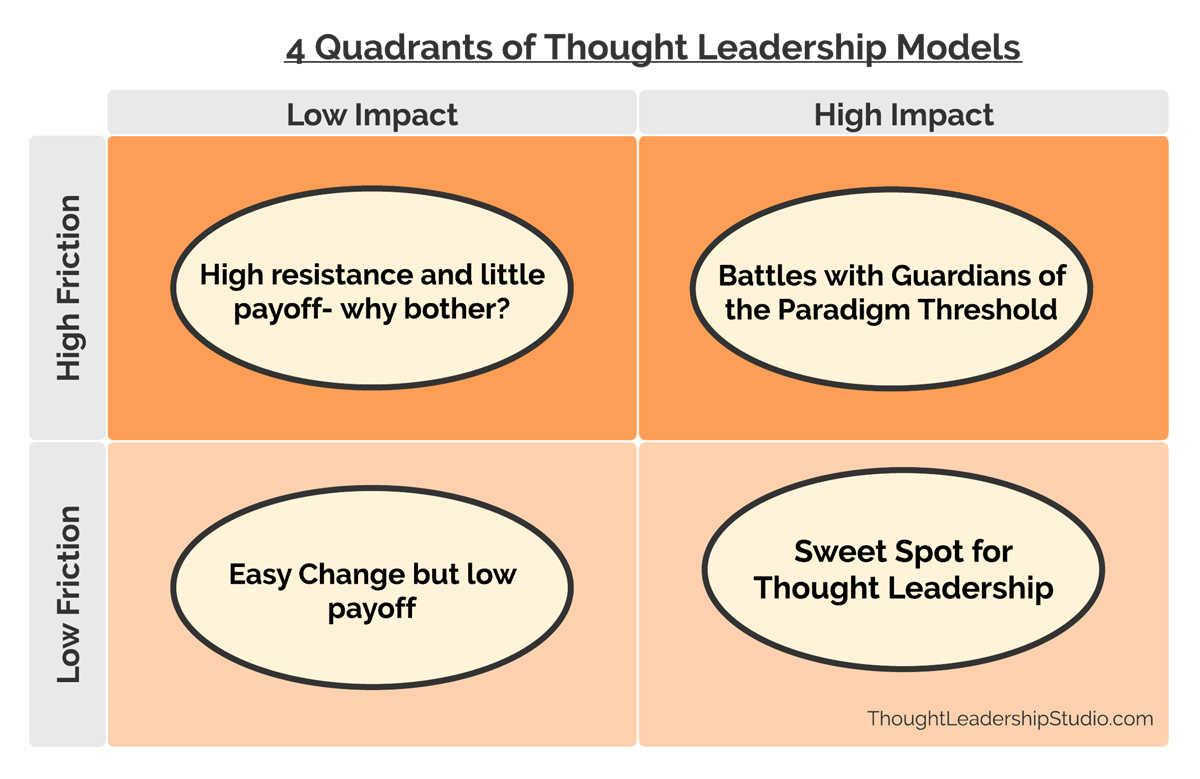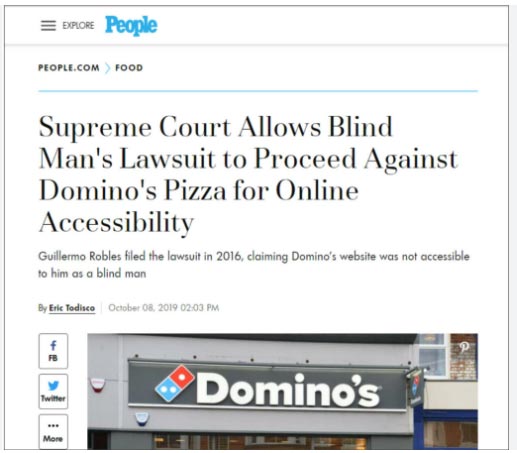Thought Leadership Studio Podcast Episodes:
How to Pick and Win Your Battles of Ideas
Episode 30 Thought Leadership implies changing thinking. How to identify thinking that is ripe for change yet has high impact.

#influencermarketing, #insight, #marketlistening, #marketresearch, #massinfluence, #mentaltraining, #motivation, #neurolinguisticprogramming, #nlp, #paradigmchange, #paradigms, #paradigmshifts, #persuasion, #storytelling, #systemsthinking, #thoughtleadershipexamples, #workshop
Or Click here to listen or subscribe on appWhat this episode will do for you
- Contrast high-impact thought leaders who also face strong opposition, like Graham Hancock and Rupert Sheldrake, with thought leadership that also has high impact but doesn't inspire such opposition.
- Learn how to find the opportunities for Strategic Thought Leadership that will support your goals.
- Gain deeper insight into the structure of a Thought Leadership Path.
- Learn to sort these opportunities to find the ones that give you the most leverage for positive change and success.
- Learn from others' experiences in building and positively influencing an audience..
Why Thought Leadership? And Why a Definite Process For It?
This episode is all about positive influence and getting better at it by knowing where to apply the skills and strategies of Strategic Thought Leadership. High profile examples of disruptors Graham Hancock and Rupert Sheldrake provide helpful lessons when contrasted with thought leadership that also provides high impact (for a given context) yet avoids rallying criticism from stakeholders in opposing paradigms.
Before we dive in, though, it might be a fair question to ask- why go to this trouble to start with?
Whether you are in marketing, sales, PR, or social change - or if you are in a leadership position of any sort - you are dealing with influence. The more effectively you influence, the more successful you are. Strategic Thought Leadership is about powerful, organized influence.
In business, if you aren't leading an audience to new thinking that highlights the advantages of what you are selling, you can be relegated to commodity status so you compete only on price. The internet has changed consumer behavior and created an attention economy. Strategic Thought Leadership gathers and potentiates attention by feeding the online research of an audience or the prospects of a market segment.
If you are in business or marketing, it's about empowering potential buyers to make the best decision, extract more value, or gain insight that elevates or reframes the purpose of a product or service. This is communication that adds significant value to the recipient. And, since attracting attention in the attention economy is about exchanging value, it helps also grow a captivated audience.
I consider thought leadership mandatory in nearly all cases of marketing. If you stay stuck in the selling patterns of your market segment, you stand the risk of being left behind when someone else does thought leadership. Or you and your organization can take that role and take an audience somewhere new where you stand alone with no competition.
Changing Minds.
Strategic thought leadership is about changing people's minds. It is about creating a bridge from old thinking to new thinking - new thinking that you design - and leading an audience across that bridge.
If you are new to this subject, I suggest starting with these posts-- The Definition of Thought Leadership
- The Nine Building Blocks of a Thought Leadership Model.
There are many varieties of such journeys. If you adopt this metaphorical role of an adventure guide in your thought leadership, you might consider both the ease of crossing such a bridge and the appeal of the terrain on the other side.
This is a good point to take a big picture view of some of the relevant steps in Strategic Thought Leadership.
The general flow of Strategic Thought Leadership includes:
- Having a clear vision of your target- what do you want thought leadership to do for you? For your audience?
- Discover specific opportunities for thought leadership.
- Put these opportunities into the structure of Thought Leadership Paths.
- Assess each for friction and impact.
- Leverage your efforts with this information in mind by picking the right Thought Leadership Model(s) to focus on. In other words, pick your battles.
- Run these through the iterative Thaut Process of Strategic Thought Leadership.
It is helpful to consider how the dynamics of Strategic Thought Leadership change when tackling more deeply held belief systems. Since you can uncover many opportunities for thought leadership once you know how to find them, let's consider two variables that can help you pick the right opportunity and maximize your benefit and the benefits you bring your audience.
Two Key Variables in Picking Opportunities for Thought Leadership:
- Impact
- Friction
Sometimes it is better to pick the low-hanging fruit, yet there are situations where one could feel called to initiate global paradigm shifts. Just know what you are getting into if that is your mission.
Unless we feel called to a higher mission of tackling large-scale fundamental, deep-rooted paradigms, it is better to look for leverage: how can we get the most positive impact with the least friction.
The sweet spot is low friction with high impact. In marketing a business, we want the maximum positive belief change with the lowest friction. That would be the bottom right quadrant of the model below:
 First, let's pretty much disregard the entire "Low Impact" column because we want to focus primarily on high impact, positive change.
First, let's pretty much disregard the entire "Low Impact" column because we want to focus primarily on high impact, positive change.
The questions become: How much friction will a particular Thought Leadership Position create as we introduce it? And is the impact it will bring worth overcoming that friction?
So, we are really contrasting degrees of friction versus rewards of impact.
Maybe the best way to illuminate these factors is through examples:
High Impact, High Friction Thought Leadership Positions
Don't underestimate the resources of Guardians of the Threshold of Paradigm Change. Some consider it systemic: it's the dynamics of entrenched paradigms on the way out. Sometimes they can only fully change once the former generation is gone.
Science makes progress funeral by funeral: the old are never converted by the new doctrines, they simply are replaced by a new generation.
-Max Planck, originator of the quantum theory in physics
However, you can also build a strong audience, even in the face of such opposition. Let's consider two examples of people who have Thought Leadership Positions that have faced intense opposition: Graham Hancock and Rupert Sheldrake... as we near the 10th anniversary of their "banned TED talks". (Click here for Hancock's banned talk and here for Sheldrake's banned talk.)
Hancock and Sheldrake have taken innumerable arrows along their pioneering journeys, as you can see on the battlegrounds of their Wikipedia pages, which have been taken over by opposing academics. Anybody basing their initial impressions of Hancock or Sheldrake will be turned off by what they read on Wikipedia. I have noticed the same phenomenon on the page for Neuro-Linguistic Programming, which is not surprising when one considers how it challenges some fundamental presuppositions in psychology and psychiatry.
When you challenge a deeply entrenched "Baseline Position" with a new paradigm (AKA Thought Leadership Position), the Guardian Editors of the Wikipedia Threshold will come out in droves.
Maybe this supports late counterculture author Robert Anton Wilson's contention that a major problem in human thinking is what he called premature conclusions. He promoted agnosticism for everything, not just religion. The premise was partly based on the assumption that keeping your mind open to new information is more intelligent than closing it like a Tupperware container with a belief system (abbreviated "BS"). Hence the title of the video about him and his philosophy: Maybe Logic.
A smarter person, in Wilson's view, better maintains the state of "maybe". But we are dealing with a lot of possibly premature conclusions.
Keep in mind that I am not arguing for or against Hancock or Sheldrake here- while I support them both, my purpose here is more about illustrating a principle: Tackle entrenched paradigms and you are in for a battle.
Maybe that's OK for you, but know what you are getting yourself in for.
Graham Hancock - Thought Leadership Position: There was a prior civilization lost in an apocalypse
 Hancock's banned TEDx talk was about the role of psychedelics in human evolution, but he is recently catching a lot of flack for theories espoused in his Netflix series Ancient Apocalypse.
Hancock's banned TEDx talk was about the role of psychedelics in human evolution, but he is recently catching a lot of flack for theories espoused in his Netflix series Ancient Apocalypse.
Starting with the book "Fingerprints of the Gods" in the mid-nineties, Graham has promoted evidence of a catastrophe at the end of the last ice age that destroyed most of the evidence of a prior, advanced civilization.
In spite of heated opposition to his hypothesis, Hancock has persevered. Due in part to widespread exposure through Joe Rogan's podcast, he has built a large audience of followers.
So, Hancock has sold a lot of books and garnered a large following, in spite of heated opposition. His high-impact message continues to gain followers, but there is also a high-friction component in the form of establishment-think that adheres to the old story of gradualism.
Thought Leader: Graham Hancock.- Thought Leadership Position: If we look back far enough, we find a prior, advanced civilization.
- Baseline Position: The evolution of civilization has been gradual, so you find declining human capabilities the farther back you look.
- Impact: High
- Friction: High
- Threshold Guardians: Archaeologists and Historians who hold a “gradualism” point of view. (seemingly, most of them)
Rupert Sheldrake - Thought Leadership Position: There is a non-material aspect to consciousness.
Sheldrake's banned TEDx talk was called "The Science Delusion". He is a British scientist and author who has proposed several unconventional ideas in the fields of biology, psychology, and parapsychology. As with Hancock, many of these ideas have been met with criticism and skepticism by academics
One of Sheldrake's most controversial ideas is the concept of "morphic resonance," which suggests that memory and form are inherent in nature and that there is a collective memory shared by all members of a species. This idea has been widely rejected by mainstream scientists, who argue that there is no scientific evidence to support it, in spite of multiple books by Sheldrake sharing statistical findings on phenomena like The Sense of Being Stared At and Dogs Who Know When Their Owners are Coming Home.
Unfortunately, the world view aspect of science has come to inhibit and constrict the free inquiry that is the very lifeblood of scientific endeavor.
-Rupert Sheldrake, Author of The Science Delusion
Thought Leader: Rupert Sheldrake.- Thought Leadership Position: If we only look at materialistic explanations for life and nature, we miss a huge piece of the puzzle as there is a non-material aspect that better explains phenomena.
- Baseline Position: If you have a purely materialistic point of view, you can explain everything. We will eventually get to consciousness.
- Impact: High
- Friction: High
- Threshold Guardians: Materialist world-view scientists, atheists.
Impact Without the Friction: The Sweet Spot for Thought Leadership in Business.
We might feel called to correct deeply-held erroneous beliefs and, like Graham Hancock and Rupert Sheldrake, find that clear evidence alone is not always enough to change minds when there are stakeholders in the old ways of thinking that stand to lose when things are questioned.
If you are similarly compelled by a mission, perhaps taking a few barbs along the way is a fair enough price to pay. But there is another way- picking high impact, low friction Thought Leadership Positions.
I feel it is helpful to avoid biting off more than you can chew by picking your battles and discovering opportunities for changing the right people's minds, the right way to the right new thinking, in a way that benefits both the audience and the company or philosophy you represent.
Digital Echo - Thought Leadership Position: Practicing Diversity and Inclusion Means Your Website Should be Accessible by People with Disabilities.
Full disclosure: Digital Echo is a client I have worked with and helped develop the thought leadership position I reference here. I share it as example of a high impact but low friction thought leadership position that will hopefully help you develop your own.
They provide website accessibility services.
 Website accessibility is important because it allows people with disabilities to have equal access to the information and features available on a website. This includes people who are blind or have low vision, who are deaf or hard of hearing, and who have mobility impairments or cognitive disabilities.
Website accessibility is important because it allows people with disabilities to have equal access to the information and features available on a website. This includes people who are blind or have low vision, who are deaf or hard of hearing, and who have mobility impairments or cognitive disabilities.
For people with disabilities, accessing the web can be a challenge due to the use of visual, auditory, and motor-based content and controls. By making a website accessible, you can ensure that all users, regardless of their abilities, are able to access and use the website's content and features.
Digital Echo was calling on business like hospitals and was typically referred to their IT departments, since accessibility was considered a technical challenge and thus a technical matter for the technicians.
We found a new connection to make. Every company now has to consider diversity and inclusion. But, as per this thought leadership piece on Digital Echo's website, two key points of diversity and inclusion are not so obvious:
- Inclusion also means including those with disabilities or impairments.
- It’s not just physical structures: it’s your digital properties too.
This thought leadership position, in the words of Digital Echo's founder, John Mulvey, "transformed" their sales process. In short, he found they started getting a very receptive audience from HR departments rather than being pigeonholed into the "IT" category. It started values-based high-level conversations.
And, best of all, it was also very low friction. Who could argue with this point of view? Without stakeholders hanging on to an outdated paradigm, it's a relatively easy change to make.
Thought Leader: Digital Echo.- Thought Leadership Position: Web accessibility is a necessary part of diversity and inclusion..
- Baseline Position: Web accessibility is a technical matter.
- Impact: High
- Friction: Low
- Threshold Guardians: Little or no resistance.
****************
So, in general, in business, we want to find potential thought leadership positions in that bottom right quadrant of High Impact yet Low Friction.
Questions to Help Sort Into Quadrants
Assessing Friction
- Who has a stake in the Baseline Model of thinking?
- What do they stand to lose if that model is undermined?
Assessing Impact
- How much is there to gain with adoption of the Thought Leadership Model?
- What does it do for you?
- What does it do for your audience?
In other words, how can you find opportunities to change the minds of an audience or market segment to lead them to new thinking that highlights what you promote?
 Part of picking the right thought leadership opportunity is recognizing the appropriate level of challenge. It's like how the best goal-setting recognizes how far to stretch: The target has to be achievable yet represent a significant step forward. It's like tuning a guitar- if the string is too loose, there's no sound. If it's too tight, there's no sound. It is only when the is string tuned to the right midpoint between too loose and over-tightness that music can happen.
Part of picking the right thought leadership opportunity is recognizing the appropriate level of challenge. It's like how the best goal-setting recognizes how far to stretch: The target has to be achievable yet represent a significant step forward. It's like tuning a guitar- if the string is too loose, there's no sound. If it's too tight, there's no sound. It is only when the is string tuned to the right midpoint between too loose and over-tightness that music can happen.
So, while it would be nice to change the world, maybe it's better to aim for significant short or medium-term impact that is achievable.
Categorize according to the challenge of the change. It's one thing to change someone's opinion, it's another to change a deeply held paradigm that's held by many people. Consider the examples of Rupert Sheldrake and Graham Hancock having their TED talks banned because - whether you buy into their points or not - their positions challenged dominant paradigms supported by entrenched stakeholders.
Contrast that with somebody selling a product, educating the prospect about the criteria that should be important to them, that may expand their thinking or challenge their thinking a little bit. These aren't deeply held belief system, they are more like opinions. You can categorize mental models through this continuum because what opinions, beliefs, convictions, and paradigms have in common is that they're all mental models. It's a matter of degree.
So we follow a common structure to put together a certain way. It can be stated as an if-then statement is one of the first steps towards challenging it.
Consider how much resistance are you likely to run into when propagating your Thought Leadership Model? The resistance can come from your intended audience, it can come from opposing players in the game you are involved in, or both.
And is the the prize of what you can potentially gain by building an audience around this model or leading an existing audience to this model worth the opposition you will likely face?
This entrenchment deeper into beliefs is why Russell Ackoff, when speaking on Systems Thinking, pointed out that breakthroughs in the field usually come from people outside of field. Because as knowledge grows deeper into a field, that means it's growing deeper into establishment-think.
Your paradigm is so intrinsic to your mental process that you are hardly aware of its existence, until you try to communicate with someone with a different paradigm.
- Donella Meadows
***************************************
Free Stuff and Offers Mentioned in Podcast
***************************************